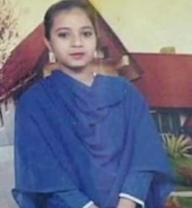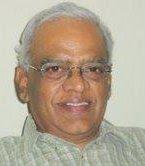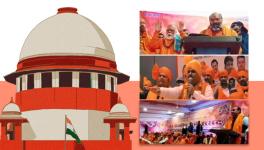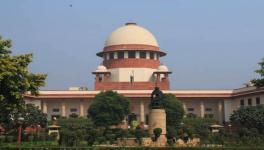The Ishrat Jahan Case: Urgent Need for Intelligence Reforms
The 1500-page long charge sheet submitted to court on July 3 2013 by the Central Bureau of Investigation (CBI) on the Gujarat High Court-ordered and supervised investigation into the Ishrat Jahan case, provides chilling evidence on how top state police officials led by VG Vanzara in collusion with top state SIB officials led by Joint Director Rajendra Kumar, conducted a joint illegal operation on June 15 2004 to liquidate Ishrat Jahan along with three others in the name of forestalling an alleged LeT-led attempt on the life of the Gujarat chief minister.
While the CBI has arrested some senior officials of the Gujarat police involved in the case, it has till now refrained from arresting SIB officer Rajendra Kumar actively involved in the planning and execution of the ‘encounter’. The cold-blooded killings are also a path breaking indicator on the likely future development of the SIB. The CBI records reportedly showed 40 telephone calls by SIB chief Rajendra Kumar with the office of the state chief minister. The three men killed are reliably learnt to have been informers of the SIB chief who had been summoned by him to Ahmadabad. It is difficult to see how the SIB officials involved in the case can escape the clutches of the law in view of the evidence collected by the CBI, which far from being a ‘caged parrot’ as earlier castigated by the Supreme Court of India is now functioning lawfully on the orders of the Gujarat High Court. It is inconceivable that these ‘encounter’ killings would have remained unknown to or unapproved of by the state chief minister cum Home Minister and his deputy. The IB has attempted a smooth public relations exercise (Times of India, July 7, 2013, page 16) but it has clearly exceeded its limited role in intelligence collection and dissemination. Its insistent reference to the LeT connection of the victims were negated by the National Investigation Agency (NIA), a sister police agency. And the Gujarat High Court too clarified that it was concerned only with the ‘encounter’ killings, not the alleged LeT connections of the victims.

Since its setting up in 1920, the IB has been the main source of ‘secret’ and ‘top secret’ security intelligence for the Union Home Ministry. Not happy with ‘over-classification’, former home secretary LP Singh in 1967 had set up the Research and Policy Division reporting directly to him in the ministry. However, the Division fell on evil days after the departure of Singh and was eventually wound up establishing the primacy of the IB in the information system of the ministry. The IB is expected to be a reliable, detached and objective agency with several subsidiary Intelligence Bureaus (SIBs) or smaller units functioning in different states. With no police powers, it merely exists as a overarching national outfit to advise and guide state police forces. Section 40 (2) of the Government of India Act, 1919 had mentioned its tasks briefly. In 1924, it was asked to work on matters relating to the security of India and report directly to the Governor-General. After independence, it was felt unnecessary to work out a detailed legal framework and charter of duties for the organisation. However, the IB’s murky role during the Emergency (1975-77) was exposed by the Shah Commission of Inquiry. The National Police Commission too submitted 8 volumes (1979-81) of its report, which were duly ignored. The LP Singh Committee in 1979 recommended reforms in the intelligence structure but these too were ignored. The IB’s role during and after the Gujarat carnage 2002 remained shrouded in secrecy with both the state and the central governments under the control of the BJP-led governments. Lacking a proper legal framework and terms of reference, it had learnt to adjust itself to the whims and fancies of successive governments in power, the Congress being the longest in power at the centre. BN Mullik, the powerful Director from 1950 to 1964 was close to Jawaharlal Nehru in many of his controversial decisions but was not interested in reforms. In 1967 when the opposition parties came to power in many states, the IB’s role became controversial. The Shah Commission of inquiry condemned the Emergency excesses (1975-77) but its report was ignored. The IB continued as before under the opposition BJP-led government during 1998-2004. The Manmohan Singh government promised police reforms but there was no follow up. The IB has remained the handmaiden of the ruling party.
The recent revelations on the role of the IB in the Ishrat Jahan case in Gujarat highlight the crisis of the organisation again and call for the re-examination and implementation the intelligence reform measures suggested by the LP Singh Committee, 1979.

(The author is a former member of the IPS and Director General of Police in Tripura. He was also Director (1980-85), Research and Policy Division, Union Home Ministry).
Disclaimer: The views expressed here are the author's personal views, and do not necessarily represent the views of Newsclick
Get the latest reports & analysis with people's perspective on Protests, movements & deep analytical videos, discussions of the current affairs in your Telegram app. Subscribe to NewsClick's Telegram channel & get Real-Time updates on stories, as they get published on our website.
























